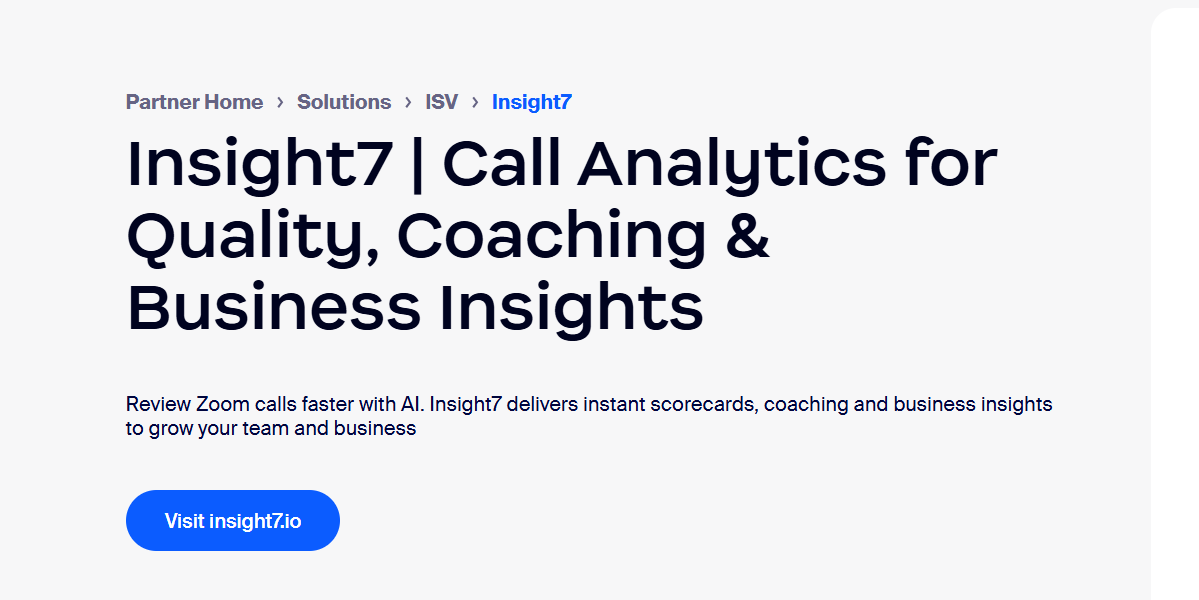How to Analyze Product Feedback
-
Bella Williams
- 10 min read
Analyzing product feedback is essential for understanding customer needs and improving offerings. Introduction to feedback analysis techniques serves as the foundation for transforming raw feedback into actionable insights. Organizations can enhance their products by employing structured methods that capture both positive and negative sentiments from users.
Implementing feedback analysis techniques involves gathering insights from various sources and categorizing them effectively. This ensures that businesses can quickly identify trends and address pain points. By combining qualitative and quantitative data, you can develop a comprehensive understanding of customer preferences, which ultimately informs product development and marketing strategies.
Generate visualizations from your qualitative data. At Scale.

Understanding Feedback Analysis Techniques
Understanding feedback analysis techniques is crucial for transforming customer opinions into actionable insights. This involves carefully examining the various methods used to process and interpret feedback. Each technique helps in breaking down complex data and extracting meaningful patterns. By leveraging these methods effectively, organizations can make informed product decisions that resonate with their user base.
Several feedback analysis techniques can enrich your understanding. Firstly, categorizing feedback allows you to group comments based on themes or sentiments, making it easier to spot trends. Secondly, sentiment analysis is vital for gauging customer emotions about your product, distinguishing between positive and negative feedback. Finally, utilizing appropriate tools can automate these processes, enhancing efficiency and accuracy. Adopting these techniques will empower you to turn raw feedback into constructive pathways for product improvement.
Gathering Comprehensive Feedback
To gather comprehensive feedback, it's essential to explore diverse channels that capture customer opinions effectively. These channels can include surveys, interviews, and social media interactions, allowing you to reach a broader audience. By employing various methods, you provide customers with accessible opportunities to express their thoughts and experiences about your product. This multifaceted approach not only increases participation rates but also enriches the quality of the feedback received.
Once you have gathered feedback, categorize it into key areas of interest to identify trends. Using systematic methods, such as tagging comments or scoring responses, will help streamline the analysis process. Furthermore, leveraging tools that automate categorization can enhance efficiency. This comprehensive understanding of customer sentiments will enable you to make informed decisions and align your product development to meet the evolving demands of your audience. Such Feedback Analysis Techniques ultimately empower your business to create a product that resonates with your users and stands out in a competitive market.
- Importance of Diverse Feedback Channels
Diverse feedback channels are essential in ensuring a comprehensive understanding of customer sentiments. Engaging with customers through various mediums—such as surveys, social media, and direct interviews—enables a wider array of opinions and insights. Different platforms allow customers to express their thoughts in their preferred ways, resulting in richer data for analysis. This variety helps to identify trends and patterns that may not be visible through a single feedback channel.
Utilizing multiple feedback channels reinforces product development strategies and enhances decision-making. For instance, combining qualitative insights from interviews with quantitative data from surveys allows businesses to paint a fuller picture of customer experiences. Each channel contributes unique insights, enriching feedback analysis techniques and guiding improvements effectively. By emphasizing diverse feedback avenues, organizations can create products that truly resonate with their customers, ultimately leading to increased satisfaction and loyalty.
- Methods for Collecting Customer Opinions
Collecting customer opinions effectively is crucial to understanding their needs and preferences. A variety of methods exist to gather insights, ensuring a comprehensive view of customer feedback. One common approach is through surveys, where structured questions can yield quantifiable data. Focus groups present another method, offering qualitative insights through discussion and interaction among participants.
Additionally, online reviews and social media comments provide real-time feedback from customers, often reflecting their genuine sentiments. Direct customer interviews, whether informal or formal, allow for deeper engagement and understanding of user experiences. Each method contributes to feedback analysis techniques, combining quantitative and qualitative data for more informed decision-making. By employing these approaches, businesses can tap into valuable insights that guide product development and enhancement efforts. Understanding diverse feedback channels facilitates a more holistic view of customer opinions and needs.
Evaluate Performance on Customer Calls for Quality Assurance.
Applying Feedback Analysis Techniques Effectively
Applying feedback analysis techniques effectively begins with categorizing the information gathered. By defining key categories such as product features, usability, and customer service, you can streamline your analysis. Tools for automated categorization can expedite this process, allowing for quick sorting of feedback into relevant segments, which improves the overall efficiency of the review.
Next, analyzing sentiment is crucial for interpreting what customers truly feel about your product. Understanding sentiment analysis helps identify underlying emotions behind customer comments. Utilizing specialized tools can ensure accurate sentiment evaluation, giving you insights that inform future product development. By engaging with feedback in these structured ways, businesses can transform raw data into actionable strategies, ultimately enhancing customer satisfaction and product success.
Step 1: Categorizing Feedback
Categorizing feedback is a crucial first step in the process of feedback analysis techniques. This involves sorting the collected insights into relevant categories, which helps in identifying patterns and key themes. Start by defining specific categories that align with your objectives, such as product features, customer service, or usability issues. These categories provide a structured framework that enables a more effective analysis of customer sentiments and experiences.
To enhance the categorization process, consider using automated tools. Such tools can quickly sift through vast amounts of feedback and assign categories based on predefined rules. This not only saves time but also minimizes the likelihood of human error. By systematically categorizing feedback, you set a solid foundation for subsequent analysis
- Defining Key Categories
To effectively analyze product feedback, it's essential to categorize that feedback into key themes and topics. Defining key categories allows teams to identify specific areas that need attention and improvement. By grouping feedback based on shared characteristics, organizations can prioritize issues more efficiently. For instance, categories could include usability, features, customer service, and pricing.
Once these categories are established, the next step is to track patterns within them. Feedback analysis techniques help in discerning trends, such as identifying which issues frequently arise within a specific category. This structured approach can guide product development, enabling teams to target improvements where they matter most. Overall, defining key categories is a foundational step in transforming raw feedback into actionable insights, supporting continuous enhancement of products and services.
- Tools for Automated Categorization
Effective product feedback analysis hinges on the ability to categorize responses accurately. Tools for automated categorization streamline this process by filtering and organizing feedback into predefined categories. This categorization allows for a clearer understanding of customer sentiments, pain points, and preferences. Utilizing these tools enhances efficiency and reduces the risk of human error during data sorting.
There are several key tools available for automated categorization. First, natural language processing (NLP) algorithms can interpret and classify text. Second, machine learning models can learn from historical feedback data and adapt categorizations over time. Third, integration with existing CRM systems can ensure a seamless flow of feedback data from customers to your analysis platform. By employing these tools, teams can focus more on interpreting insights rather than sorting through volumes of feedback manually, significantly advancing their feedback analysis techniques.
Step 2: Analyzing Sentiment
To effectively analyze product feedback, understanding sentiment is crucial. Step 2: Analyzing Sentiment dives into how customer emotions and opinions can guide product development and improvements. By utilizing feedback analysis techniques, businesses can gauge positive, negative, or neutral sentiments expressed in customer responses. This understanding helps reveal what customers appreciate or dislike, simplifying the process of enhancing product offerings.
Implementing sentiment analysis can be done through several techniques. First, text analysis software can automatically categorize feedback according to sentiment, significantly speeding up the process of data evaluation. Next, manual review is essential for nuanced understanding, allowing teams to capture specific sentiments that algorithms might miss. Additionally, sentiment scoring can lend quantitative measurements to qualitative feedback, assisting in clear visual representations of data trends. By applying these sentiment analysis techniques, organizations can ensure they address customer concerns effectively and foster product success.
- Understanding Sentiment Analysis
Sentiment analysis is a powerful tool for understanding customer emotions tied to feedback. By analyzing text data from reviews, social media, and surveys, businesses can uncover the feelings behind customer opinions. This process not only helps identify overall satisfaction levels but also highlights specific areas for improvement in products or services.
To grasp sentiment analysis fully, it is essential to utilize various techniques and tools. Key methods include natural language processing and machine learning algorithms, which enable the accurate interpretation of sentiments. Businesses can categorize feedback as positive, negative, or neutral through these technologies, offering insights into customer experiences. Ultimately, understanding sentiment analysis enhances feedback analysis techniques, leading to more informed decisions and improved customer satisfaction.
- Tools for Accurate Sentiment Evaluation
To achieve accurate sentiment evaluation, several tools and techniques can facilitate effective feedback analysis. One vital aspect is using natural language processing (NLP) software, which can quickly analyze large volumes of data. These tools categorize feedback into positive, negative, and neutral sentiments, assisting businesses in understanding customer emotions. By deploying analytical frameworks, companies can uncover trends and patterns that might otherwise go unnoticed, ensuring they capture the complete picture of customer sentiment.
Another essential tool for sentiment evaluation is machine learning algorithms. These algorithms improve over time, becoming more accurate at detecting nuances in language. For instance, they can identify sarcasm or the context behind certain phrases. By integrating these advanced analytics into their feedback processes, businesses can make informed decisions that resonate with their audience, ensuring the development of products that align with customer expectations. Ultimately, investing in the right tools amplifies the effectiveness of feedback analysis techniques and contributes to long-term success.
Conclusion: Mastering Feedback Analysis Techniques
Mastering feedback analysis techniques is essential for transforming user opinions into actionable insights. By effectively categorizing and analyzing customer feedback, businesses can identify patterns that inform product development and enhance customer satisfaction. Utilizing various tools can streamline this process, allowing for efficient sentiment evaluation and data visualization.
Furthermore, understanding the nuances of customer feedback can lead to a more refined approach in addressing user needs. The journey of mastering these techniques will not only improve product offerings but also foster stronger relationships with customers, driving long-term success. Embrace feedback analysis as an ongoing practice to remain agile in a competitive market.







